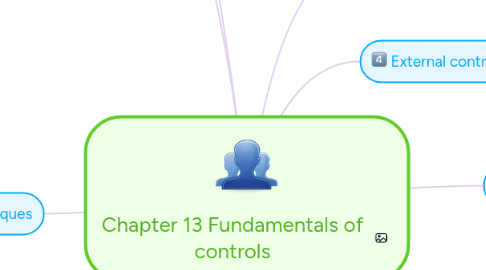
1. Four steps in the control Process
1.1. 1. Establish performance objectives and standards
1.1.1. Output standards
1.1.1.1. Result
1.1.2. Input standards
1.1.2.1. Effort
1.2. 2. Measure actual performance
1.2.1. Differences between actual results and original results
1.3. 3.Compare aactual performance with objective and standards
1.3.1. Need for action= Desired Performance - Actual performance.
1.4. 4. Take necessary action
1.4.1. Problem situation
1.4.2. Opportunity situation
2. Control Tools and Techniques
2.1. Basic Financial Ratios
2.1.1. Liquidity
2.1.2. Leverage
2.1.3. Asset management
2.1.4. Profitablity
2.2. Balanced Scorecard
2.2.1. Financial performance
2.2.2. Customer Satifactin
2.3. Project management
2.3.1. Overall planing
2.3.2. Supervision
3. Time quality management
3.1. Plan
3.2. Do
3.3. Check
3.4. Act
4. Internal control
4.1. Self Control
4.1.1. Self management
5. Management process
5.1. Planning
5.2. Leading
5.3. Controlling
5.3.1. To ensure results
5.3.1.1. Measure Performance
5.3.1.2. Take corrective action
5.4. Organizing
6. External control
6.1. Bureaucratic Control
6.1.1. Autocratic, Hiearchy
6.2. Clan Control
6.2.1. Norms and expectations set by the organisational culture
6.3. Market Control
6.3.1. Company adjust products according to the feedback
7. Type of control
7.1. Preliminary control
7.1.1. Work Inputs
7.1.1.1. Feedforward controls
7.1.1.1.1. Solve problems before they occure
7.2. Steering Control
7.2.1. Work Thoughputs
7.2.1.1. Concurrent Controls
7.2.1.1.1. Solve problems while they are occuring
7.3. Post action controls
7.3.1. Work Outputs
7.3.1.1. Feedback Controls
7.3.1.1.1. Solve problem after they occur

